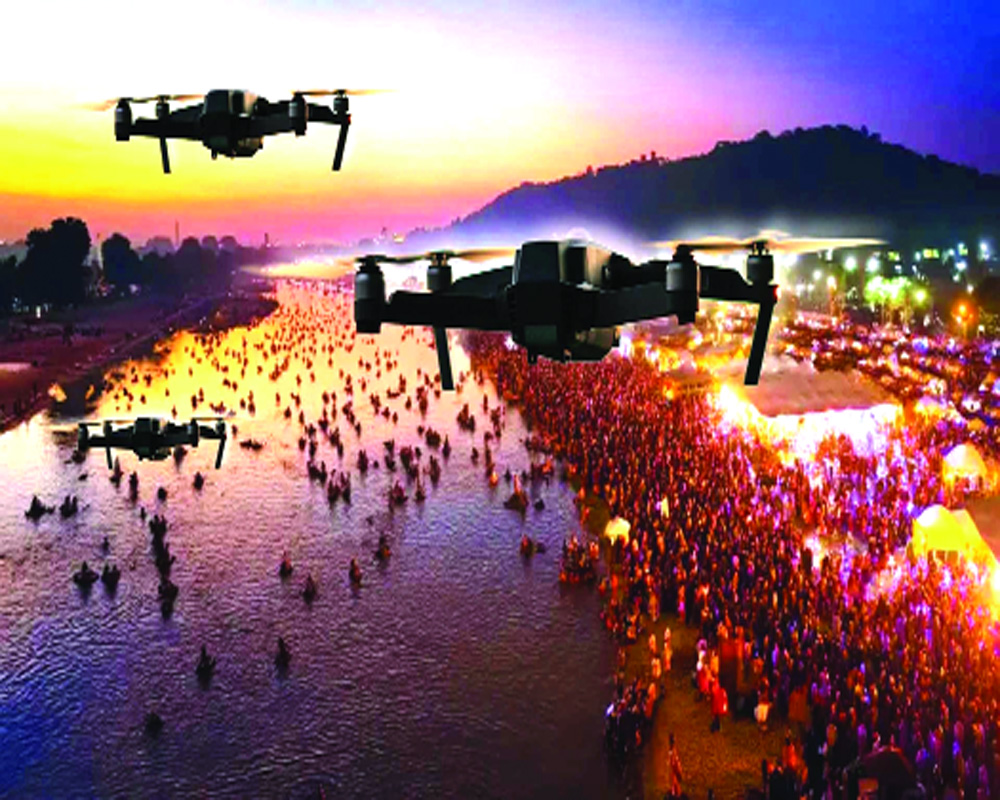IIT Kanpur research highlights how government initiatives are shaping the Mela—blending ancient traditions with modern infrastructure to enhance accessibility and efficiency
The Maha Kumbh Mela in Prayagraj draws millions of pilgrims worldwide to the sacred confluence of the Ganga, Yamuna and Saraswati rivers. As this grand spiritual event unfolds, an ongoing IIT Kanpur study provides real-time insights into stakeholder experiences. This research examines how government initiatives shape pilgrim experiences, blending ancient traditions with modern technology.
For devotees, the Mela remains a deeply spiritual journey, with bathing in the Triveni Sangam seen as a path to salvation. While age-old rituals and processions inspire awe, an extensive logistical network operates behind the scenes to manage massive crowds.
A key focus of the study is transportation. With pilgrims arriving from across India and abroad, the government’s commitment to improving accessibility is evident. Nearly 40 per cent of attendees rely on public transportation, primarily trains and buses. Despite expanded shuttle services and improved parking facilities, feedback is mixed. While most find transportation satisfactory, some report overcrowding and delays during peak hours. A hallmark of Maha Kumbh 2025 is its technological integration, earning it the title "Digital Maha Kumbh." Mobile apps, e-wallets, and real-time crowd monitoring enhance the experience for pilgrims and organisers. Many appreciate online registration, virtual darshan booking, and real-time updates on crowd density, transport, and amenities.
These tools streamline accessibility, particularly for international visitors and those from remote areas. However, bridging the digital divide remains a challenge. While tech-savvy pilgrims adapt easily, older attendees and those from rural regions often struggle with digital platforms. Some report difficulties using smartphones or accessing the internet, highlighting the need for alternative engagement methods. Feedback underscores the importance of inclusive communication strategies blending digital and traditional approaches.
Security and crowd management are also key concerns. Managing millions of attendees in Kumbh Mela is a massive undertaking. The government has deployed extensive security personnel, CCTV surveillance, and designated safe zones, including lifeguard-staffed bathing areas. Nearly 93 per cent of respondents feel secure within the Mela’s vast grounds, affirming these measures’ effectiveness. However, congestion near ghats causes anxiety among some pilgrims, emphasizing the need for refined crowd management as the event progresses.
Health and sanitation remain top priorities. Overall, 81 per cent of respondents find sanitation facilities adequate, reflecting high satisfaction with cleanliness. Temporary medical camps and mobile health units ensure pilgrims’ wellbeing, yet restroom overcrowding persists during peak hours. Despite thousands of cleaning staff and waste management facilities, additional measures are needed to maintain hygiene during busy periods. These findings highlight commendable efforts while emphasising the need for continued improvements.
Inclusivity is also a focus, with the government enhancing accessibility for differently-abled individuals and senior citizens. Dedicated pathways, toilets, and designated spaces reflect a commitment to inclusive participation. The widely appreciated ‘Lost and Found’ services further ease concerns, helping separated families navigate the crowd more efficiently. Environmental impact remains a major concern. The government has introduced eco-friendly initiatives, including waste segregation, solar-powered lighting and over 25,000 trash bins to reduce the ecological footprint.
Despite these efforts, concerns persist over plastic use and non-biodegradable waste. While 62 per cent of respondents recognise sustainability progress, stronger awareness campaigns and stricter enforcement of eco-friendly practices are needed.
The ongoing study suggests green initiatives must be reinforced through greater public education on waste management and sustainability. As the IIT Kanpur study continues to document stakeholder experiences, the Maha Kumbh Mela 2025 is a testament to the evolving nature of large-scale spiritual events. Government initiatives have improved efficiency, security, and inclusivity. Stakeholder feedback highlights the need to refine transportation, expand digital inclusion, enhance crowd management, and address environmental concerns.
The success of the Mela hinges not only on preserving spiritual traditions but also on integrating modern infrastructure, technology, and inclusive governance. More than a massive gathering, the Maha Kumbh exemplifies how government initiatives can transform spiritual events into safer, more efficient, and enriching experiences. As it unfolds, it remains a dynamic confluence of tradition, technology and transformation.
(The author is a professor of Sociology at IIT Kanpur. Views expressed are personal)
























